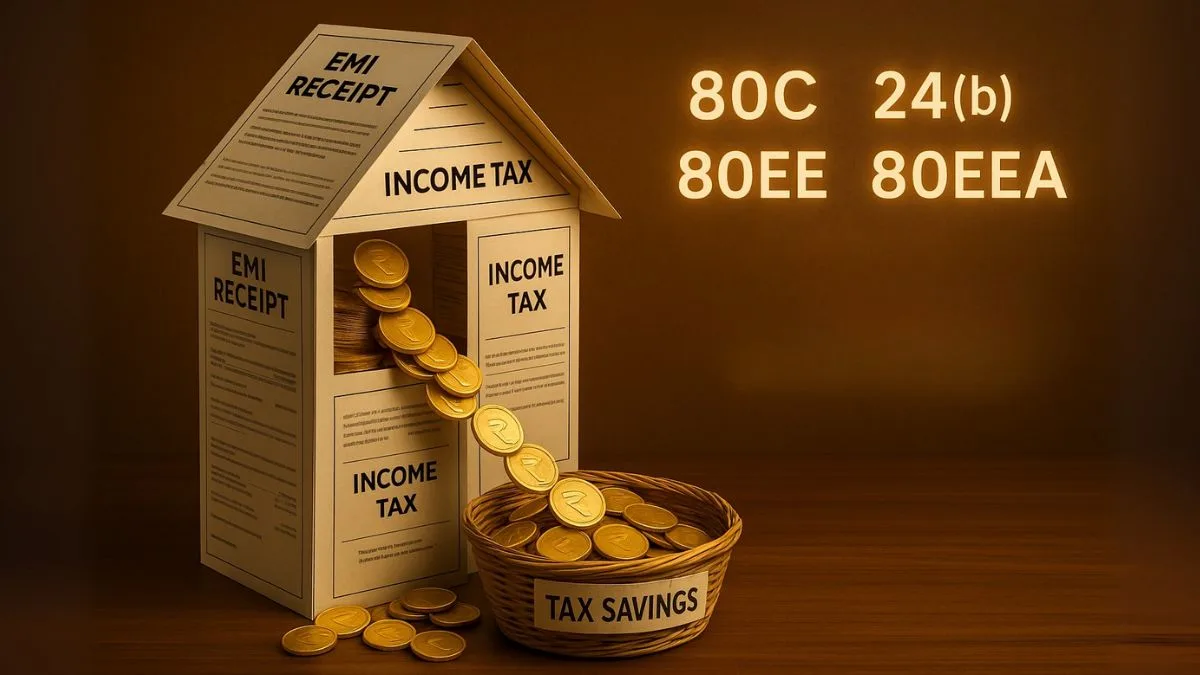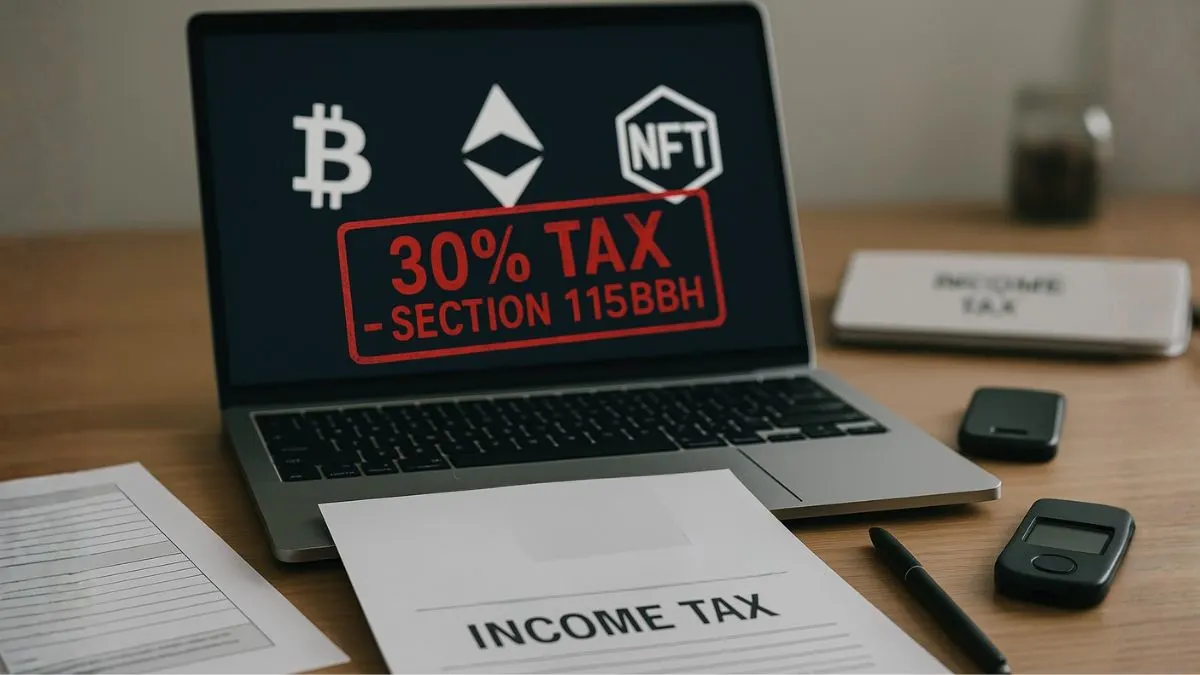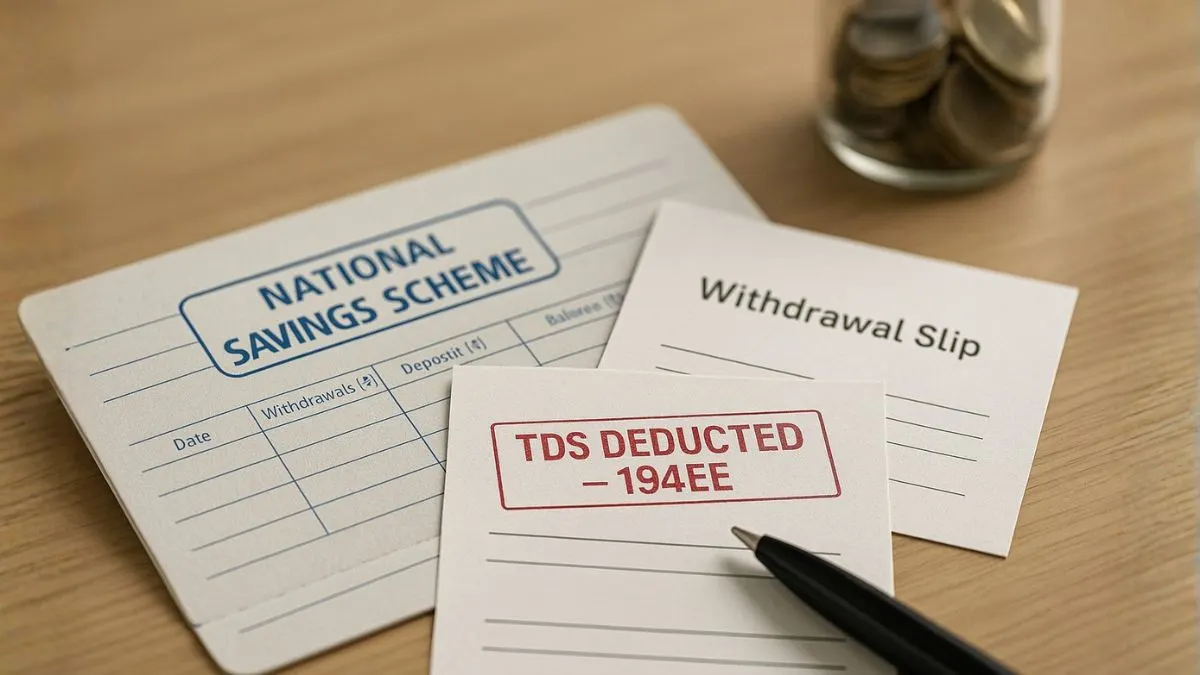
Owning a house is a dream for millions of Indians. To encourage home ownership, the Government of India provides multiple tax benefits on housing loans. These benefits reduce the financial burden of EMIs by allowing deductions on both the principal repayment and interest paid on housing loans. However, many taxpayers are confused about which housing loan section in income tax applies to them—whether it is Section 80C, 24(b), or the special section 80EE.
This article provides a detailed breakdown of all housing loan sections in income tax, their limits, eligibility, & practical examples. By the end, you will clearly understand how to claim maximum deductions while filing your ITR.
Housing Loan Principal Deduction – Section 80C
The housing loan principal section in income tax comes under Section 80C. Under this, the repayment of the principal portion of your EMI is allowed as a deduction.
- Limit: Up to ₹1.5 lakh in a financial year.
- Eligibility: Deduction is available only after the construction of the house is complete and possession is taken.
- Lock-in: If the property is sold within 5 years, the claimed deduction gets reversed & becomes taxable.
So, if you are paying ₹20,000 per month as EMI and ₹8,000 of it goes towards the principal, you can claim that amount under Section 80C, subject to the ₹1.5 lakh overall limit. This housing loan principal section in income tax is especially helpful for salaried individuals since they usually already invest in PF, LIC, or ELSS, and home loan principal further adds to their 80C basket."
Also Read: The ₹1.5 Lakh Tax-Saving Secret Most Taxpayers Miss!
Housing Loan Interest Deduction – Section 24(b)
The housing loan interest section in income tax is covered under Section 24(b) of the Income Tax Act.
- Limit: Maximum deduction allowed is ₹2 lakh per year for a self-occupied house.
- If let-out property: Entire interest paid on the loan is deductible without any limit.
- Condition: The loan must be taken for purchase, construction, repair, or renovation of property.
This section is the biggest relief for taxpayers since the interest component of home loans is usually higher in the initial years. For example, if you are paying ₹3.5 lakh as interest in FY25, you can claim ₹2 lakh under Section 24(b).
Thus, income tax housing loan interest section plays a huge role in reducing taxable income.
Also Read: Maximize Your Home Loan Tax Benefits
Additional Housing Loan Deduction – Section 80EE
In addition to Sections 80C & 24(b), the government introduced Section 80EE to give further relief to first-time homebuyers.
- Limit: Up to ₹50,000 per financial year.
- Eligibility:
- Loan amount should not exceed ₹35 lakh.
- Property value should not exceed ₹50 lakh."
- The buyer should not own any other house at the time of loan sanction.
This means if you qualify, you can claim interest on home loans as deduction under Section 80EE over and above the ₹2 lakh limit of Section 24(b).
For instance, if you paid ₹2.3 lakh as interest in FY25, you can claim ₹2 lakh under Section 24(b) & the remaining ₹30,000 under Section 80EE.
Also Read: A Boon for First-Time Homebuyers
Combined Benefits Example
Let’s take a real example to understand how housing loan exemption section in income tax works.
- Principal repayment: ₹1,20,000 → Claimed under Section 80C
- Interest paid: ₹2,50,000 → ₹2,00,000 claimed under Section 24(b) ₹50,000 under Section 80EE (if eligible)
👉 Total deduction claimed = ₹3,70,000 in a single financial year!
This shows how powerful housing loan tax benefits can be if utilized properly.
Conditions to Keep in Mind
While claiming housing loan interest income tax section or principal repayment, you must be aware of certain conditions:
- Possession date: Deductions start only after possession is taken. Pre-construction interest can be claimed in 5 equal installments after completion.
- Joint loans: If the loan is taken jointly, each co-borrower can claim deductions separately, effectively doubling the benefit.
- New vs Old Regime: These benefits are available only under the old tax regime, not the new one.
- Documentation: Keep your loan certificate from the bank as proof while filing ITR.
Housing Loan Section in Income Tax – FAQs
Q1. Housing loan comes under which section in income tax?
Ans. The principal repayment comes under Section 80C, while interest comes under Section 24(b). Additionally, first-time buyers can claim under Section 80EE.
Q2. Can I claim both Section 24(b) and 80C together?
Yes, both can be claimed simultaneously since one covers principal & the other covers interest.
Q3. Is there any exemption for housing loan interest in the new regime?
No, the new regime does not allow these deductions. To claim benefits, you must opt for the old regime."
Q4. Can I claim housing loan tax benefits on more than one property?
Yes, you can claim for multiple properties, but the deduction limits may differ for self-occupied and let-out houses.
Conclusion
The housing loan section in income tax provides significant relief to taxpayers. By combining Section 80C, Section 24(b), and Section 80EE, you can save lakhs every year on your income tax liability. However, most people miss out on maximizing these benefits due to lack of awareness.
If you are repaying a home loan, make sure you structure your EMI & tax filing smartly. Filing your ITR with the correct housing loan claims not only saves tax but also helps you stay compliant with the law.
👉 Want to ensure you never miss a single deduction? Visit Callmyca.com and let our tax experts file your ITR accurately while maximizing your housing loan benefits.











